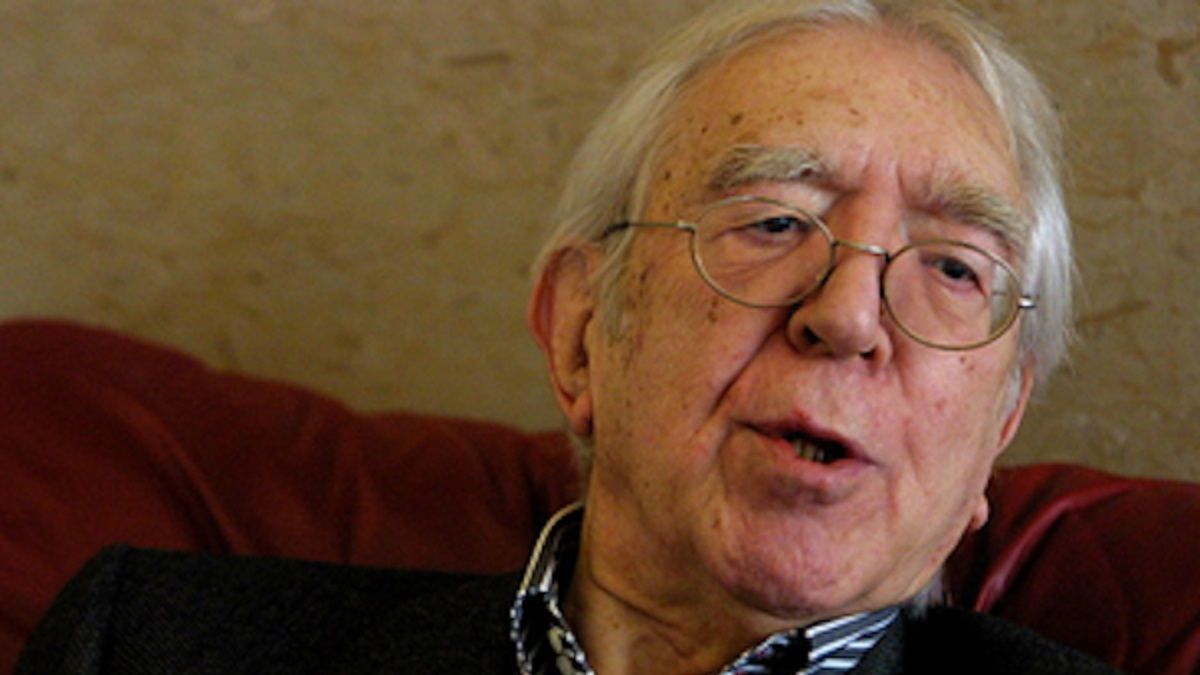Now that “One Hundred Years of Solitude” has become a series and is being broadcast on Netflix, it is worth remembering that the great Spanish editor Carlos Barral He rejected that novel with “it’s not going to be successful.” It did not occur to him to think that 40 million copies would be sold worldwide. That careless sentence of Barrel It was later denied. For the researcher José Luis De Diego, “Barral was a cultured editor, in love with Central European literature, and when he came across a Colombian’s tropical novel he did not read it”. That’s where it intervenes Cortazar and tells him: “Gabo send it to Porrúa to Sudamericana”. And the chips, as in a Cortazarian game, of causal coincidences. They begin to organize themselves.
Francisco “Paco” Porrúa (1922-2014) had edited “Ours”, book where the chilean Luis Harss interviews the future great writers of Latin America. To the only one who Porrúaan inveterate reader, I didn’t know, it was the Colombian; He asked for his books. He read them, and began publishing them. When the manuscripts of “One Hundred Years of Solitude” called Tomás Eloy Martínezjournalistic director of the magazine “Front page”and said to him: “You have to read this, I don’t know if the author is a genius or totally crazy”. Martinez He began to read, after a little while he exclaimed: it is an extraordinary novel, and decided to help spread it. He asked Ernesto Schóó to go to Mexico to interview the Colombian. That’s how it came out Garcia Marquez on the cover with the title “The great novel of America”and an extensive report inside the weekly.
The Boom had exploded
Works and names did not stop adding. Some were displaced by those of García Márquez, Vargas Llosa, Cortázar and Sources, although those others were nothing less than Rulfo, Borges, Carpentier, Onetti, Donoso, Ribeyro. Porrúa He humbly maintained that he had nothing to do with the boom. Since 1962 he was Editorial Director of Sudamericana, and against all odds he had published “Hopscotch” of his already friend July; had recovered Marechal and spread to Saeramong others. What mattered was publishing those who for people were “the new messengers of happiness.” And he had his own kingdom where like the Minotaur, of “The Kings” of Cortazaris a poet who plays in his labyrinth offering the best. Martin Felipe Castagnet in his extraordinary book “Minotaur, An Odyssey by Paco Porrúa” (Moving Train) maintains that he took the Minotaur from a French surrealist magazine. It sure was like that. Castagnet He received his doctorate in Letters with a thesis that formed the basis of his consecrating book, which provides an admirable insight into the life and work of “Paco” Porrúa.
Who is that Galician?
Born in Galicia, PorruHe became Argentine from his Patagonian childhood. There was a pause. The family had to return to Spain for a couple of years due to the mother’s illness. Then they returned to Argentina. Paco He went to high school as a pupil at the La Salle School in San Isidro, where he isolated himself to read, and they took him away. “In the shadow of the girls in bloom” forbidding him to continue reading those things. He wanted to be a sailor like his father, but they prevented him from doing so because he had not become a national. He entered Philosophy and Letters. He worked for printers and publishers.
A day in “Les Temps Modernes” according to Boris Vian There was a new genre: science fiction. He read to Bradbury and he got excited. He planned a collection that would be called Minotaur, dedicated to that, which for Paco It was just good fantasy literature that ranges from speculative fiction to marvelous and fantasy. I was probably thinking like Anthony Burgessone of its authors, who “the dystopian novel, speculative fiction, prophetic fantasy, can have a healthy influence on society, actively correcting regressive or antidemocratic tendencies”
If “The Seventh Circle” had done well with police, why not science fiction. He followed the path of Borges of transforming a popular genre into a cult genre, maintains From Diego. For the first book, “Martian Chronicles” asked Borges the prologue. Borges I didn’t know Bradbury. He brought him the book. The next day he delivered the laudatory prologue.
One of the attributes of Porrúa It was the care of form and content. Quality books, well translated and with suggestive covers created by artists such as Romulo Maccio. It is said that, in the Galician Societies bar, the painter seoane commented that “Porrúa keeps giving away Galician translators to Argentina”and the poet Arturo Cuadrado explains “The translator is always Paco, but every book he translates, and he translates many, he puts the name of a relative, and since he is an invisible translator we don’t see it here”. Translating was one of his passions. He considered that a translation was never finished, he corrected it in each reissue.
With his translation of “Martian Chronicles” The deployment of a seal that gains the loyalty of its readers begins. An independent publisher that, through participation and distribution in Sudamericana, Edhasa, Planeta, would be fundamental in the dissemination of science fiction, horror and fantasy in Spanish. An absolutely exemplary publishing house, according to the demanding Jorge Herralde.
The Minotaur that returns
With “A dead cat” of Guillermo Martinezreappears in Argentina, its place of origin, the publishing house of Paco Porrúastarting a line of illustrated books by prominent artists, in this case Santiago Caruso.
The Planeta headquarters, Spain, has been recovering Minotauro classics, which are distributed among us, where the Minotauro books are. Bradbury, Philp K. Dick, Stapleton, Burgess, Ballard, Ursula K. Leguinamong others, comments Alvaro Garateditor and manager of Minotauro in Argentina.
“Just as they seek to replace works that were out of print – Minotauro today has a catalog of about 500 titles – new voices have been added, such as Grady Hendrix, to give an example, or authors have been added, such as Angélica Gorodisher. On the other hand, under the coverage of Minotauro, are the licenses and derivative products that come from board games and video games, such as the Dragonlance series, and from historical fantasy niches, which together already have 150 titles. A special case is the care of a fundamental work by Minotaur, ‘The Lord of the Rings’, and all of Tolkien.”concludes Garat.
Source: Ambito




